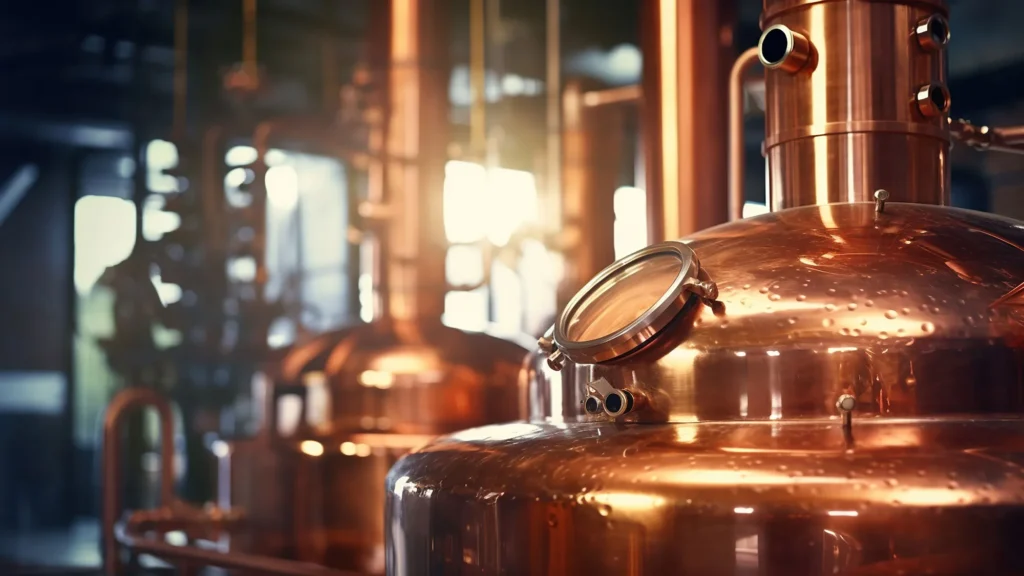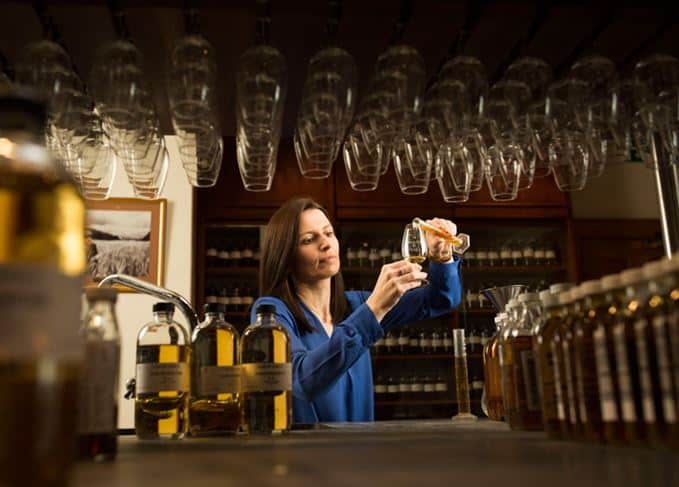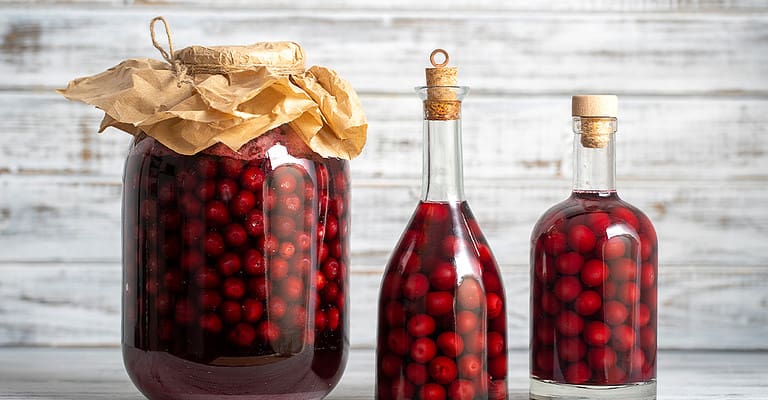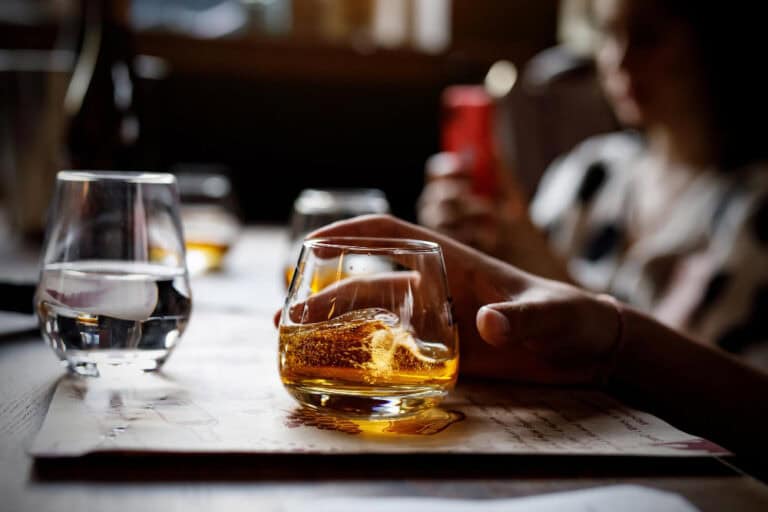Old Growth Bourbon: A Legacy in Every Bottle
Old Growth Bourbon, a spirit rich in New England’s distilling heritage, narrates a tale of meticulous craftsmanship and an enduring legacy of American whiskey-making. With grains sourced from local farms and aged in American oak casks, it captures its origins’ robust flavors and pioneering essence. This article embarks on an odyssey through the traditions that shape Old Growth Bourbon’s unique character. We uncover the layers that make this bourbon a testament to the craft of distillation, celebrating its revered place among the world’s great spirits.
What is Old Growth Bourbon?
“Old Growth Bourbon” generally refers to a type of bourbon that is made using traditional and often time-honored methods. This term can be suggestive of the bourbon being aged for a longer period, or it could imply the use of older, more mature grains or traditional production techniques.
Since the term isn’t officially regulated, its meaning can vary between distilleries. In the context of the Tree House Distillery, their “Old Growth Small Batch Bourbon” likely signifies a bourbon crafted with specific attention to the quality of ingredients and aging process, aiming to achieve a distinct and mature flavor profile.

The Art of Bourbon Making
The creation of bourbon is a meticulous process that combines age-old traditions with precision. Old Growth Bourbon exemplifies this craft through its careful production methods.
Selecting the Grains
The foundation of bourbon lies in its grain composition. Old Growth Bourbon selects a blend of corn, rye, and barley, each contributing to the final flavor profile—corn for sweetness, rye for spice, and barley for a smooth finish.
The Distillation Process
Distillation transforms the fermented grain mash into a potent spirit. Copper stills are essential in this stage, where the mash is heated, and the resulting alcohol vapors are collected, producing a pure distillate ready for aging.
Aging and Maturation
Aging is a critical phase where bourbon acquires its character. Old Growth Bourbon matures in charred oak barrels, gaining its rich color and complex flavors through the interaction between the wood and the spirit.



The Old Growth Bourbon Range
Old Growth Bourbon offers a selection that showcases the distillery’s commitment to flavor diversity and quality.
Signature Flavors
The range includes various signature flavors, each with a unique taste profile, catering to different preferences, from bold and robust to smooth and subtle.
Tasting Profiles
The tasting notes guide enthusiasts through the flavors and aromas of each bourbon, from the initial scent to the lingering aftertaste, enhancing the tasting experience.

Pairing Suggestions
Bourbon’s versatility is highlighted with pairing suggestions that complement the flavors, whether enjoyed neat, on the rocks, or in a cocktail.
The Impact of Old Growth Bourbon
Old Growth Bourbon’s influence extends beyond its taste, impacting culture and the environment with its storied presence.
Cultural Significance
Old Growth Bourbon has become synonymous with tradition, pivoting in gatherings and becoming a cherished part of community celebrations.
Environmental Stewardship
The brand is committed to sustainable practices, from grain selection to bottling, ensuring that each step in the bourbon-making process is environmentally conscious.
Recognition in the Industry
Old Growth Bourbon’s dedication to quality has not gone unnoticed, earning it accolades and awards that speak to its excellence.
Exploring the Bourbon Landscape
The journey with Old Growth Bourbon offers a glimpse into the broader bourbon world, filled with history, innovation, and a future ripe with possibilities.

Trends and Innovations
The bourbon industry is ever-evolving, and Old Growth Bourbon stays ahead of the curve by embracing new techniques and trends that shape the future of bourbon-making.
Resources for Enthusiasts
For those looking to deepen their knowledge, numerous resources are available to explore the rich and complex world of bourbon further.
Cultural Significance of Bourbon
Bourbon’s rich history is deeply intertwined with American culture, symbolizing a heritage of craftsmanship and community spirit.
Bourbon’s Roots
The origins of bourbon can be traced back to the early American settlers, who distilled whiskey in Kentucky, laying the foundation for what would become America’s native spirit.
Symbol of American Craftsmanship
Bourbon represents the American ideals of independence and innovation, reflected in its craftsmanship and pride in the distilling process.

Social Fabric
Bourbon has been a staple in social gatherings, fostering community and celebration, and has become an integral part of American traditions and festivities.
Environmental Impact of Bourbon Production
The production of bourbon has implications for the environment, from the sourcing of ingredients to the distillation process.

Sustainable Practices
Bourbon producers, including Old Growth Bourbon, increasingly adopt sustainable practices to minimize their environmental footprint, focusing on eco-friendly farming and production methods.
Forest Preservation
The aging process of bourbon in oak barrels directly connects to forest ecosystems. Preserving old-growth forests is crucial for maintaining biodiversity and combating climate change.
Climate Considerations
The whiskey industry, including bourbon production, is affected by weather and climate. Distillers adapt to environmental changes to ensure the quality and consistency of their spirits.
Recognition in the Industry
Old Growth Bourbon has garnered respect and accolades within the spirits community for its exceptional quality and dedication to the craft.
- Celebrated Excellence The distillery’s commitment to creating superior bourbon has been recognized with numerous awards, reflecting its status as a leader in the industry.
- A Legacy of Awards Throughout its history, Old Growth Bourbon has consistently earned top honors at spirits competitions, celebrating its tradition of excellence.
- Critical Acclaim Esteemed critics have praised Old Growth Bourbon for its complex flavor profiles and craftsmanship, further solidifying its reputation as a premium bourbon.
Trends and Innovations in Bourbon
The bourbon industry is dynamic, with Old Growth Bourbon at the forefront of embracing and shaping the latest trends.
- The Bourbon Renaissance Bourbon is experiencing a renaissance, with Old Growth Bourbon leading innovation and new flavor experiences.
- Sustainable Distilling Old Growth Bourbon is committed to sustainability, implementing practices that ensure the brand’s legacy will continue for generations.
- The Future of Bourbon Looking ahead, Old Growth Bourbon is poised to influence the industry with its forward-thinking approach, setting the stage for the next evolution of bourbon.

Final Analysis
Old Growth Bourbon stands as a beacon of tradition and innovation. The advice for enthusiasts is simple: explore with passion and savor with respect. Bourbon is a journey of the senses, and Old Growth Bourbon offers a path rich with discovery. It’s not just about the flavors in the glass but the stories they tell and the legacy they carry. As you explore the bourbon world, let Old Growth Bourbon be a compass to guide you through the heritage and future of this storied spirit. Embrace the experience, and let it inspire your own bourbon story. Cheers to the journey that awaits with every sip of Old Growth Bourbon.
FAQs
What defines bourbon as a distinct type of whiskey? Bourbon is a unique variety of whiskey that must be distilled in the United States and adhere to specific criteria. Its mash bill must contain at least 51% corn, be aged in new charred oak barrels, and meet certain requirements regarding its proof at various stages of production.
How does the aging process affect the flavor of bourbon? The aging process is crucial in developing bourbon’s flavor. As bourbon matures in charred oak barrels, it absorbs compounds from the wood, contributing to its color, flavor, and aroma. The length of aging can significantly influence the taste, with longer periods typically resulting in deeper, more complex profiles.
Can bourbon be aged too long? While there is no strict rule on the maximum aging time for bourbon, it is generally believed that bourbon can be over-aged, which might lead to an overly woody or tannic flavor. The ideal aging period varies depending on the bourbon and the desired flavor profile.
What are the different types of bourbon glasses, and how do they affect the drinking experience? Several types of bourbon glasses are designed to enhance the drinking experience differently. For example, rocks glasses are suitable for bourbon served over ice, while Glencairn glasses are designed to concentrate the aromas for nosing the spirit. The choice of glass can influence the taste and aroma of the bourbon.
What is the significance of bourbon in American culture? Bourbon is special in American culture, symbolizing the nation’s history and craftsmanship. It has been a part of social traditions and celebrations for generations, reflecting the American spirit of community and innovation.
Jl.Surjan
Disclosure: Our blog contains affiliate links to products. We may receive a commission for purchases made through these links. However, this does not impact our reviews and comparisons. We try our best to keep things fair and balanced, in order to help you make the best choice for you.






